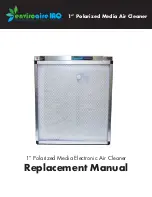
# 48283B006
Page 3
Figure 2
Slab Mounting
2° or 2" per 5' slope tolerance away from building
structure.
Discharge Air
Mounting Slab
Ground Level
Building
Structure
Figure 3
Wind Barrier Construction
Prevailing Winter Winds
24"
Wind Barrier
Inlet Air
Inlet Air
Inlet Air
Electrical Wiring
All field wiring must be done in accordance with the
National Electrical Code (NEC) recommendations,
Canadian Electrical Code (CEC) and CSA Standards, or
local codes, where applicable.
Unit must be grounded in accordance with
national and local codes. Failure to ground unit
properly can result in personal injury or death.
WARNING
Refer to the furnace or blower coil Installation Instructions
for additional wiring application diagrams and refer to unit
rating plate for minimum circuit ampacity and maximum
overcurrent protection size.
1. Install line voltage power supply to unit from a properly
sized disconnect switch. Any excess high voltage field
wiring should be trimmed or secured away from the
low voltage field wiring.
2. Ground unit at unit disconnect switch or to an earth
ground. To facilitate conduit, a hole is in the bottom of
the control box. Connect conduit to the control box using
a proper conduit fitting. Units are approved for use only
with copper conductors. 24V Class II circuit connections
are made to the low voltage pigtails. A complete unit
wiring diagram is located inside the unit control box
cover (see also pages 16 and 17 of this instruction).
3. Install room thermostat on an inside wall that is not
subject to drafts, direct sunshine, or other heat sources.
4. Install low voltage wiring from outdoor to indoor unit and
from thermostat to indoor unit (see Figure 4).
5. Do not bundle any excess 24V control wire inside control
box. Run control wire through installed wire tie and tighten
wire tie to provide low voltage strain relief and to maintain
separation of field-installed low and high voltage circuits.
Refrigerant Piping
Field refrigerant piping consists of liquid and suction lines
from the outdoor unit (sweat connections) to the indoor
coil (flare or sweat connections).
Select line set diameters from Table 2 on page 4 to
ensure that oil returns to the compressor. Size vertical
Thermostat Designations
Figure 4
See unit wiring diagram for power supply connections.
If the indoor unit is not equipped with a blower relay,
one must be field supplied and installed.
Do not connect C (common) connection between
indoor unit and thermostat except when required by
the indoor thermostat. Refer to thermostat installation
instructions. C (common) connection between indoor
unit and outdoor unit required for proper operation.
Power
Indoor Unit
Thermostat
Outdoor
Unit
Y1 Outdoor Unit
Heat
Cooling
Indoor Blower
R
W1
Y
G
C
R
W
Y
G
C
C Outdoor Unit




































